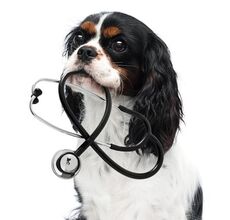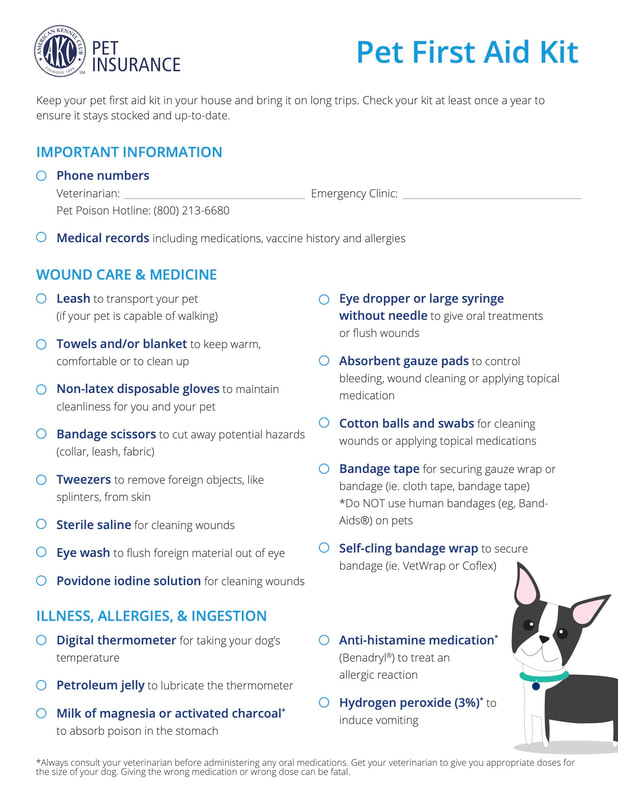 We frequently get requests to purchase two puppies from the same litter as families like the idea of their dog having a playmate and being raised with a sibling / littermate. Many people also (mistakingly) think raising two puppies at the same time will be easier than just having one. While it sounds enticing, we want to make sure that prospective owners are familiar with a very real issue labeled "littermate syndrome" before making the decision to purchase two pups. Littermate syndrome refers to a condition that can occur when two puppies from the same litter are raised together in the same household. It is characterized by an unusually strong bond between the littermates, which can lead to behavioral and developmental issues if not properly managed. When two puppies are raised together, they may become overly dependent on each other and have difficulty forming strong bonds with humans. They may exhibit separation anxiety when separated, struggle with socialization and training, and have difficulty adapting to new environments or experiences outside of their sibling relationship. Littermate syndrome can manifest in various ways, such as increased aggression or fearfulness towards other dogs or people, difficulty focusing on individual training, and an overall lack of independence. The strong bond between the littermates can prevent them from fully developing their own identities and learning important social skills. When our prospective families ask to purchase littermates, we discourage but we don't refuse. Instead, we educate families on how to mitigate littermate syndrome, Taking proactive measures from the beginning can help eliminate the issues. Here are some strategies to help: 1. Separate their living spaces: Provide separate sleeping areas and crates for each puppy to promote individuality and prevent excessive dependence on one another. This helps them develop independence and reduces the likelihood of separation anxiety. 2. Individual attention and training: Spend quality time individually with each puppy. Engage in separate training sessions, playtime, and walks to establish a bond with each dog. This helps them develop their own relationship with humans and build confidence outside of their sibling dynamic. 3. Socialization with other dogs and people: Expose each puppy to a variety of social situations, different dogs, and new people. This helps them learn how to interact with others, build their social skills, and become well-rounded dogs. 4. Separate training sessions: Train each puppy separately to ensure they learn to respond to commands individually and focus on their own training. This prevents them from relying solely on each other for cues and commands. 5. Independent experiences: Allow each puppy to have separate experiences outside of their sibling relationship. Take them on individual outings, introduce them to new environments, and expose them to different stimuli to build their confidence and adaptability. 6. Gradual separations: Gradually increase the time spent apart from each other. Start with short separations and gradually extend the duration. This helps them learn that being alone is not a cause for distress and reduces separation anxiety. 7. Seek professional guidance: Consult with a professional dog trainer or behaviorist who has experience with littermate syndrome. They can provide personalized advice and guidance to help you navigate through the challenges and create an effective training plan. Remember that preventing littermate syndrome requires consistent effort and dedication. Providing individual attention, training, and socialization opportunities will go a long way in ensuring that your Cavalier King Charles Spaniel puppies develop into well-adjusted, independent dogs.
0 Comments
 April is National Pet First Aid Awareness month and it's the perfect time to do an annual check of our supplies and make sure we have on hand anything we may need to take care of our Cavalier. This is particularly important with puppies as they have a tendency to get in to mischief whenever possible. Below you will find a copy of the AKC first aid checklist to help you build your supply closet. This is also a great time to brush up on some of your first aid skills to make sure you can help your puppy or dog in case of emergency. Our favorite skill is learning how to induce vomiting and then understanding when and most importantly, when you should not use this skill. Ingestion of toxic foods, plants or items is one of the most common dangers in dogs and Cavaliers are no exception. Knowing how and when to induce vomiting can prevent costly trips to the vet (and even death). Here are the basics to remember: 1) WHAT YOU NEED: 3% hydrogen peroxide and a large syringe (without the needle), turkey baster or similar mechanism to force the peroxide down the dogs throat. 2) HOW MUCH TO USE: 1 teaspoon for every five (5) pounds of your dog's weight. For most Cavaliers, three (3) teaspoons is more than enough. 3) WHEN TO USE IT: Hydrogen peroxide is only useful to induce vomiting of a food or substance that has been consumed within the last two hours or less. This method works great when your dog or puppy has eaten a few grapes, snuck a piece of chocolate from the kid's trick-or-treat bag or chewed a portion of your peace lilly when you weren't looking. If you come home and find an empty chocolate wrapper on the floor but have no idea what time your dog ingested the food, proceed immediately to the vet. If you see your dog consume the dangerous food or substance and it's been less than two (2) hours, proceed with this method and consider a trip to the vet if the entire amount is not expelled in the vomit. 4) WHEN NOT TO USE THIS METHOD: Please read this list carefully before inducing a dog to vomit and NEVER use this method in any of these situations:
5) WHAT TO DO NEXT: If you've deemed it safe to induce vomiting at home, simply fill the syringe with the measured amount of peroxide and force it down the dogs throat. It may take 5-10 minutes, but your dog will almost always throw up whatever they've eaten. Stay with your dog this entire time and be prepared to help them clear their mouth or throat of any large objects. Keep a close eye out after they've finished vomiting to make sure they aren't having any trouble breathing and expelled everything they ingested. If there are any issues, be prepared to head directly to the vet or emergency vet if after hours. Knowing how and when to quickly induce vomiting in dogs has saved shelters, breeders, and owners from expensive and unnecessary trips to the vet. Having this tool in your arsenal can help save your pet and prevent significant liver damage if they've ingested a toxic food and you catch it quickly. Many people live hours from the vet or their pet chooses to pull this stunt long after the local vet is closed. Safely inducing vomiting is a skill worth learning and this page is one worth saving. All of our puppies are sent home with this information and we educate our puppy owners in knowing how to save their precious pets; however, we are not veterinarians. Our veterinarian is familiar with and approves this practice but we remind everyone to PLEASE consult your vet if you have any questions about your dog and a specific item, plant or food they have ingested.  MVD stands for Mitral Valve Disease, which is a heart condition characterized by the degeneration of the mitral valve. The mitral valve is responsible for ensuring the flow of blood between the left atrium and the left ventricle of the heart. In dogs affected by MVD, the valve becomes progressively damaged, leading to a back-flow of blood and causing various symptoms and complications. The condition is thought to be caused by a combination of genetic and environmental factors, MVD is particularly prevalent in Cavalier King Charles Spaniels (CKCS). In fact, it is one of the most common health issues affecting this breed. The high prevalence of MVD in CKCS is primarily attributed to genetic factors but unfortunately a gene has not been identified through genetic testing leaving breeders unable to determine with certainty if a breeding dog may later be impacted by the disease. There have been efforts to identify specific genes associated with MVD in CKCS and develop genetic tests to aid in breeding practices and reducing the incidence of the disease but to date they have been unsuccessful. Due to the increased susceptibility of CKCS to MVD, it is important for owners and breeders to be aware of the condition and take steps to manage and mitigate its impact. Regular veterinary check-ups, including cardiac examinations and diagnostic tests, can help detect MVD early and initiate appropriate treatment and management strategies. Breeding programs aimed at reducing the prevalence of MVD in CKCS typically involve careful selection of breeding pairs based on their genetic health and the presence of MVD in their lineage. Regular heart testing through the OFA is a must for all Cavaliers! Once you've chosen a puppy from a responsible breeder, it's important that you take all precautions to eliminate possible environmental causes that have been linked to MVD as well. Those include: While the primary cause of Mitral Valve Disease (MVD) in dogs, including Cavalier King Charles Spaniels, is considered to be genetic, there are certain environmental factors that can potentially increase the risk or progression of the disease. These factors are not known to directly cause MVD, but they can contribute to its development or exacerbate existing conditions. Some possible environmental factors include: 1. Diet and excess weight - Poor nutrition and obesity have been suggested as potential risk factors for MVD. A balanced diet and maintaining a healthy weight can help support overall cardiovascular health. 3. Exercise and physical activity: Lack of exercise and leading a sedentary lifestyle may contribute to the development or progression of heart disease, including MVD. Regular exercise, appropriate for the dog's age and health condition, can help promote cardiovascular fitness. 4. Second-hand smoke: Exposure to second-hand smoke has been associated with an increased risk of cardiovascular disease in dogs. Avoiding exposure to smoke and maintaining a smoke-free environment can be beneficial for the overall health of dogs. 5. Stress: Chronic stress can potentially affect cardiovascular health. Dogs that experience prolonged periods of stress may be at a higher risk of developing or worsening MVD. Providing a low-stress environment and appropriate mental stimulation for dogs can help reduce stress levels. It is important to note that the influence of these environmental factors on MVD is not fully understood, and more research is needed to determine their precise roles in the development and progression of the disease. However, maintaining a healthy lifestyle, including proper nutrition, regular exercise, and minimizing exposure to potential risks, is generally beneficial for overall heart health in dogs. If you suspect that your dog may be suffering from any heart condition, it is crucial to consult with a veterinarian for an accurate diagnosis and appropriate treatment options. |
FTC DISCLOSUREThis blog contains affiliate links. I may earn commissions from qualifying purchases made from links on this blog. We do not recommend any products that we do not purchase and use for our dogs. Categories
All
Archives
June 2024
|

 RSS Feed
RSS Feed